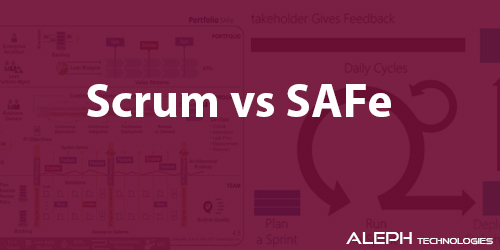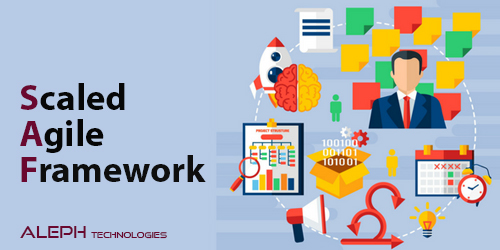Scrum vs SAFe: Unveiling the Differences 🔄
When it comes to Agile methodologies, Scrum and SAFe stand out as prominent frameworks with distinct approaches to project management and organizational agility.
Unlocking Business Agility with SAFe: A Comprehensive Guide 🚀
SAFe, short for Scaled Agile Framework, seamlessly merges Agile methodologies with Lean product development and systems thinking. This dynamic framework fosters alignment, collaboration, and efficient delivery across multiple Agile teams, leading to a significant boost in business agility. By accelerating productivity, reducing time-to-market, enhancing quality, and increasing employee engagement, SAFe has become a game-changer for organizations worldwide, including both private enterprises and government agencies of varying sizes. Through documented case studies, SAFe has proven to streamline processes, elevate quality, and deliver optimal value within the shortest possible time. 🌟
Why Release Management Matters in Agile Projects 🚀
Releases should ideally be seamless events, but in many projects, they become significant milestones that impact decision-making for individuals with limited understanding of the release process.
How to Build a Large Agile Organization: Strategies for Success 🌟
Are you facing challenges in running projects smoothly within a large organization? Are you skeptical about integrating project management tools with large-scale operations? In this article, discover effective strategies to build a fully agile working organization on three essential levels.
Agile at Scale: Combining Scrum and Kanban for Optimal Results 🚀
In the realm of Agile at Scale, the efficacy of small, cross-functional, autonomous teams surpasses that of large, functionally siloed, hierarchical teams when tackling a single project or initiative. However, not all teams operate alike, nor should they. Different types of work demand different Agile methodologies.
Assessing Your Need and Readiness for the Scaled Agile Framework (SAFe)
In today's dynamic business landscape, two questions often arise: "Do we need the Scaled Agile Framework (SAFe)?" and "Can we safely implement SAFe?" To address these inquiries, I've developed a self-assessment based on the essential considerations organizations face when evaluating SAFe adoption. 🔄💼
Agile at Scale - Why Now? 🔄
Agile, introduced in 2001 in the Manifesto for Agile Software Development, challenges the traditional waterfall development model by offering an iterative and flexible approach to software development. Unlike the linear waterfall model, Agile allows for the creation and testing of small parts of projects simultaneously, leading to better alignment with customer feedback and needs. 💻🚀
Delivering Agile to the Next Level: Five Steps to Success
In my last post, I hinted at a broader application of Agile on the horizon. From government organizations to startups, the potential for Agile is immense. But how do we get there? In this series of posts, I'll dive deep into this exciting journey, breaking it down into five essential steps. 🚀
Understanding the Scaled Agile Framework (SAFe): Benefits, Challenges, and Implementation
The Scaled Agile Framework (SAFe) has emerged as a powerful tool for implementing lean and agile strategies across entire organizations or significant development entities. Widely adopted globally, SAFe has proven to be influential in enhancing competitiveness, productivity, and quality within IT development organizations. 🚀
Why Agile Is the Solution to Project Management Challenges in IT Companies
In today's dynamic business landscape, IT companies face a myriad of project management challenges. Traditional methodologies like the waterfall model often fall short in addressing the need for flexibility, adaptability, and continuous improvement. Enter Agile, a game-changer in project management methodologies. 🌟









